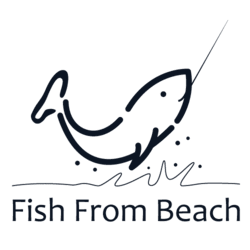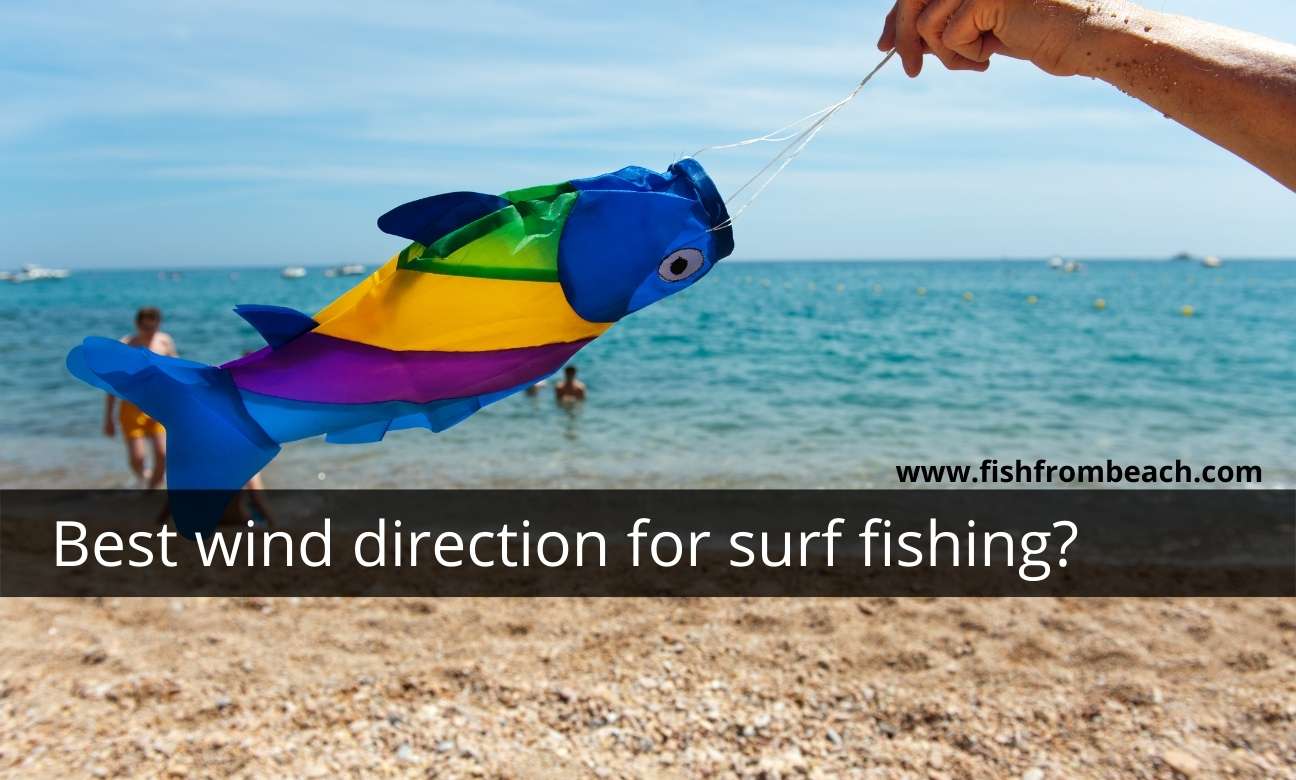When it comes to surf fishing, the wind is a pretty inconsistent factor. One day it will be still and quiet, and the next day it will seem able to knock you off your soles.
What’s even more delicate here is that you can’t prepare for the wind in advance. Oftentimes, you don’t know the strength and nature of the wind you will be facing until you are already on the fishing field.
Meaning, the wind is a factor over which you don’t have much control.
Now, does this affect the fishing experience? Does it dictate how many bites and catches you get?
That’s what we will discover today.
In this article, we’ll discuss the different ways wind affects surf fishing, which wind direction produces the best results, and what to expect in any situation?
So, without further ado, let’s dive in.
Does wind affect surf fishing?
Well, it is clear that fish do not feel the wind and cannot tell if there is wind out of the water or not. However, wind is usually associated with many other things that affect underwater environments and therefore can affect the feeding activity of fish.
So answering the question, yes, wind affects surf fishing, but not directly.
However, this impact of wind on surf fishing breaks down into two levels. A macro-level and a micro-level.
Don’t worry, I will elaborate.
The macro-level
The macro-level refers to the weather changes associated with each wind direction.
Wind blowing from any direction is always the result of a weather change somewhere. This usually causes a drop or increase in atmospheric pressure, which most fish can sense through their lateral lines and swim bladders.
Now, depending on what they detect, they will either start feeding like crazy, act normally, or become sluggish and inactive until the weather becomes favorable again.
That’s how the macro-level affects surf fishing.
With this idea in mind, let me say that it’s difficult to come up with a rule here. Why? Because it all depends on where you are fishing.
Yes, there is a popular idea that west and south winds are more productive in most of the United States and that north and east winds produce poor results. But I can’t consider that to be true everywhere you fish.
Take a look at online surf fishing forums and you will find lots of anglers, sometimes from the same region, swearing by different wind rules.
So what I recommend here is to forget about the wind direction and focus more on the weather changes.
Generally, the best time for surf fishing is right before a cold front. An upcoming storm causes atmospheric pressure to drop. Fish detect that, become stressed, and therefore try to feed as much as possible because they don’t know how long the bad weather will last.
The period after stormy weather can also be rewarding, especially if you wait a few days until the barometric pressure returns to a normal degree.
In the post-storm period, fish try to compensate for the days they couldn’t eat and therefore take baits more aggressively.
The worst time to be surf fishing is during a storm or right after it. Low temperatures and air pressures make fish too lethargic and drive most of them deeper in search of better conditions.
So the above are the main guidelines on the best time to surf fish, regardless of where the wind is blowing.
With time and experience, you will become more familiar with how the weather affects the wind in your area. Until then, keep your eye on the weather forecasts and plan your trips before cold fronts or a few days after them.
The micro-level
With the micro-level, it’s much easier to come up with a rule and that’s what we will discuss in the rest of this article.
What do you mean by the micro-level?
It’s simply how the wind direction affects you when you are in the field fishing the surf.
Meaning, how do offshore (seaward) and onshore (shoreward) winds affect your surf fishing experience, and what to expect during crosswinds that go perpendicular to your line?
Offshore vs Onshore wind?
Both can be very rewarding. But if I have to choose one, I would always pick onshore wind.
Many experienced anglers also prefer surf fishing with the wind in their face. Why? Simply because there is a rule that says:
Game fish follow prey fish, prey fish follow tiny food, tiny food follows the current, and the current follows the wind.
That’s exactly why onshore wind is often more productive.
It’s because it creates currents that carry plankton and tiny baitfish and life forms to near-shore waters. In turn, predatory fish also come closer to follow their prey.
So it’s like the entire food chain comes nearer to the shore. It’s therefore very likely to find more fish within your reach when casting against the current.
Another reason surf fishermen prefer onshore winds is because offshore winds tend to absorb and tender the strength of the waves, making the surf clearer and calmer.
This is not ideal for surf fishing because game fish feed the most in agitated and rough waters. Not too rough that it becomes dirty and extremely difficult to navigate, but choppy enough to provide cover, disorient baitfish, and stir up food.
Offshore winds reduce this effect and can therefore diminish the bite.
Onshore wind usually creates more agitation in the surf zone. That not only helps the bite, but also makes it much easier to read the beach and identify the points, holes, rip channels, and sandbars.
That said, it should also be mentioned that offshore wind can also sometimes be rewarding.
The thing to know here is that most fish prefer to swim against the current. As a result, they will probably head towards you when the wind hits your back.
This is a good thing, especially when there is food in the surf zone enticing fish to approach.
From first-hand experience, offshore wind is also good when surf fishing in the rain.
The rain carries lots of insects, bugs, spiders, and other nutrients from the roads and rivers toward the sea. That alone can put a fair amount of target fish within your reach. But offshore wind gives them more reasons to approach as it helps to carry the food deeper, where they are more comfortable to feed.
On top of that, offshore wind helps increase your casting distance and therefore allows you to target areas you can’t reach only with your power and casting skills.
Onshore wind on the flip side can shorten your casting distance or even tangle your rig before it reaches the water.
That’s my biggest concern when casting against the wind. Fortunately, the wind where I fish is rarely that strong.
Conclusion: what is the best wind direction for surf fishing?
The main takeaway here is that onshore wind is likely to produce better results unless it’s too strong that you can’t cast properly.
I believe the fact that onshore wind drives the entire food chain closer to shore outweighs any other advantage offshore wind provides.
More fish within your casting range means more bites, more rod shakes, and as a result, more catches.
What about crosswind?
Crosswind is a bit tricky. That’s because with two anglers fishing in the same place, one may get excellent results and the other nothing to be proud of. Why? Well, because when fishing crosswind, you have to choose where to cast very carefully. You fail at that and you may deploy your bait where no fish hold.
Remember, fish usually swim and feed against the current, and the current always follows the wind.
This simple rule is enough to help you predict where the fish feed during crosswinds and, as a result, decide where to cast.
As a rule of thumb, during crosswind, the best bite rate happens when you cast in the same direction of the wind and retrieve in the opposite direction. This way, you create more chances to meet hungry fish as they swim against the current looking for easy prey.
Here, you can imagine that lures work very well, but live bait can be rewarding too.
A good trick is to hook the baitfish through the tail, as that gives it the look of a struggling fish when you retrieve it against the current.
How much wind is too much for surf fishing?
For me, my fishing hat always provides the answer.
I’m not joking. If the wind can take the hat off my head, I lower my expectations and wait for poor results. Worth noting here that the hats I use for surf fishing are usually well-made and sit pretty securely on my head.
It takes therefore a fairly strong wind to knock them off there.
To give a number, I believe anything higher than 30mph is a deal-breaker. Although I will lower that threshold even more if I’m fishing from the rocks or from a high vantage point.
No fish in the world is worth more than my life.
Some recommended surf fishing gear(*)
Note (*): If you make a purchase through links from this website, we may get a small share of the sale from Amazon or other similar affiliate programs.
Surf Fishing Survey
Help us provide you with better content by answering simple questions about your surf fishing experience and knowledge.
We will put the collected responses together and turn them into valuable information that will help you catch more fish from shore 😉
Note: No personal information will be collected with your answer.


